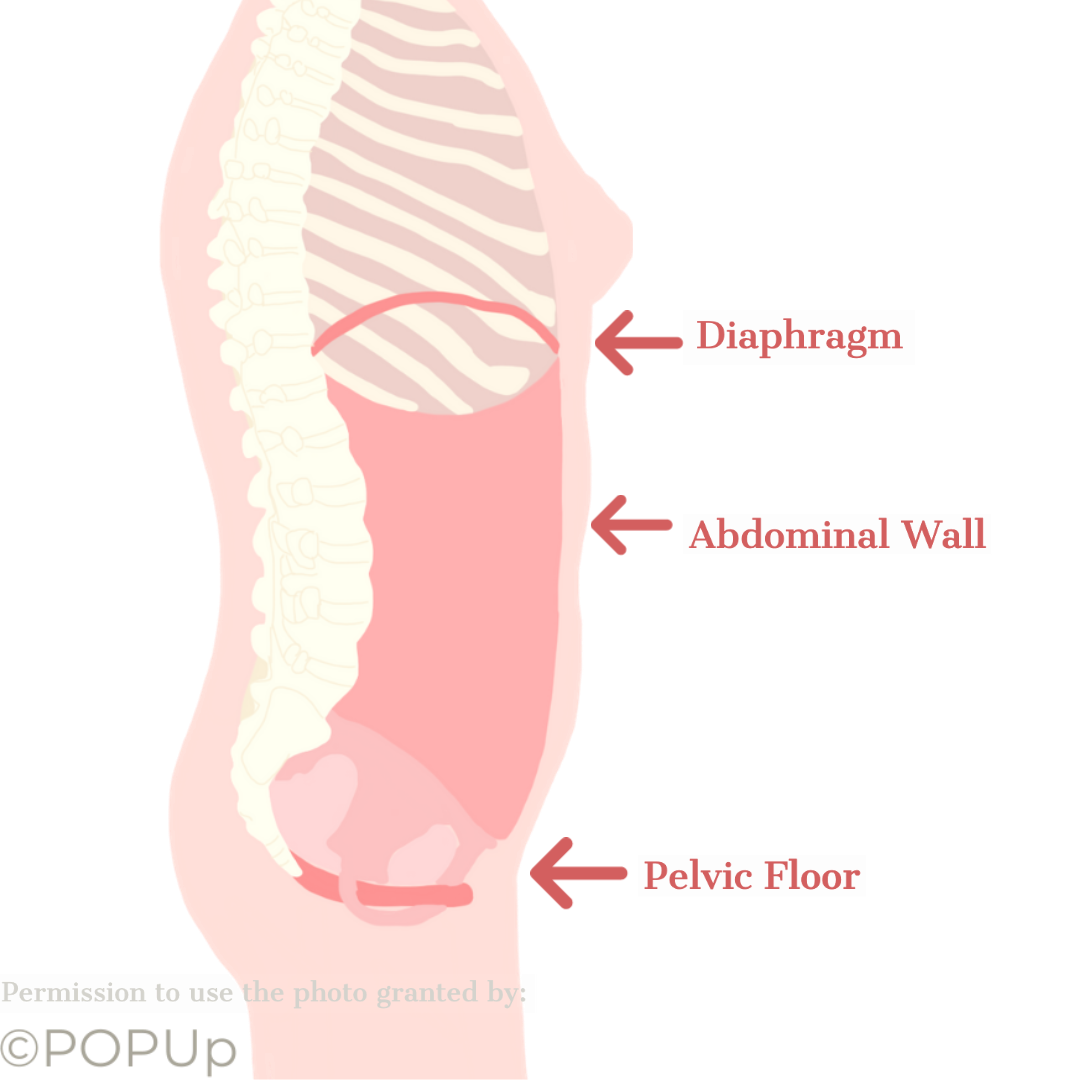How to Work Under Pressure (*Hint- Build Core Strength)

The pressure I’m talking about here is the pressure in our abdomens that builds up and releases like air in a balloon. This is referred to as “intra-abdominal pressure” and it changes depending on our movement and breath. This pressure is important in postpartum recovery because we want to make sure we prepare the walls of our balloon (our muscles) to accommodate the amount of pressure in our abdomen (which goes up the harder a task is).
To understand how we create and control pressure, picture your trunk as a canister. Your pelvic floor is the... floor (go figure). Your abdominals are the walls (wrapping around from the midline in the front to the spine). Your diaphragm (big breathing muscle under the lungs) is the ceiling.

Inhale– pressure in the abdomen goes up as your diaphragm draws down to pull air into the lungs
Exhale– pressure in the abdomen goes down as your diaphragm releases upward
Lift something heavy– muscles tighten and pressure goes up
The more pressure you build up in your abdomen, the more prepared (think strong and ready) the muscles have to be to accommodate that pressure. This means that before you lift something heavy or do a challenging body weight exercise, you must be prepared for the increase in abdominal pressure that the activity will create.
If part of the floor, wall or ceiling has a weak point, the pressure will push through it. This can come in the form of:
-
Gasping: The “ceiling” releasing pressure through our vocal chords, no injury occurs.
-
Leaking: The pelvic floor releasing pressure, a sign that it’s not providing appropriate tension/ support for that task.
-
A sense of heaviness or pressure in the pelvis: Another sign that the pelvic floor may not be providing appropriate tension (this can mean too much OR too little tension).
-
Diastasis recti: The fascia along the midline of the stomach doming or coning outward, a sign that the abdominals aren’t coordinating/working together on both sides of the trunk.
-
Hernia: Another sign that the abdominals are not firing up to the task.
Before we start exercises that load the body and create more pressure in the abdomen, we have to make sure that all sides of the canister are strong enough and ready to handle the amount of pressure required for the task and that the pressure gets managed appropriately to not lead to injury.
So how do we prepare ourselves to handle pressure?
-
CHOOSE AN EXERCISE THAT MATCHES WHAT YOUR FLOOR AND WALLS CAN HANDLE. In general, the harder a strength exercise, the more pressure you will put into your abdomen. So pick one that’s appropriate and doesn’t cause the symptoms/ sensations described above.
-
Gradually make your exercises harder as you get stronger in the pelvic floor and abdominal wall. If you start to notice the sensations listed above just back off a little bit until you can work without them.
-
Continue to breathe during an exercise. When you hold your breath, you’re trapping air into the abdomen, which maintains a high pressure that your body may not be ready for. (This is called Valsalva and is an okay technique for trained individuals… but it is not recommended during the 2nd and 3rd trimesters and early postpartum even for those who are trained in it).
-
Exhale during the hardest part of the exercise (this only works for exercises where there is movement, such as push-ups). When you exhale, not only does it help manage the abdominal pressure, it also leads to a natural activation of the abdominal and pelvic floor muscles. This can help build strength so these muscle groups are ready for the task.
Work on training your areas of weakness. You are only as strong as your weakest link! During and after pregnancy, the abdominals and the pelvic floor tend to become less efficient at accommodating pressure. We must reteach these areas how to create the appropriate tension. This generally takes a combination of strengthening and coordination that a physical therapist can help you with.
Stay connected with news and updates!
Sign up here to be the first to know about new programs, events, and special offers.
Don't worry, your information will not be shared.
We hate SPAM. We will never sell your information, for any reason.


